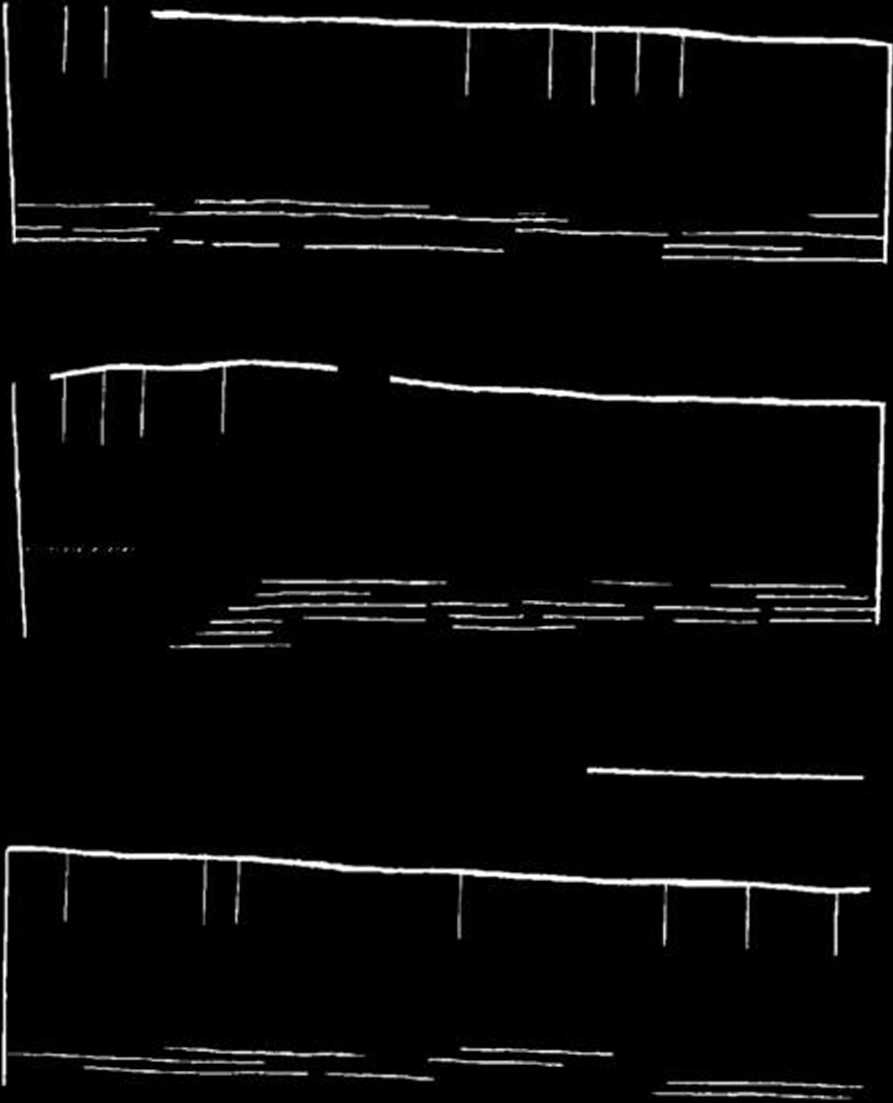8589356517
22 JACEK LECH
tory of the flint minę at Bębło near Cracow (Fig. 22). The excavated depth of No 1 was 60 cm below ground level; objcct No 2 — 80 cm (Fig. 23) object No 3 — 40 cm, all very similar in this respect to the exp!oitation unit from ViSnevaya Góra. The original depth of pits at Bębło was bigger in sonie places, probably by several tens of ccntimetres, as a result of the erosion of the loess
Fig. 23. Bębło, Cracow dist. Pit No 2. Scalę 20 cm
Photo by J. Lech
layer. In the cutting, No 1 was morę than 160 cm wide, but its through section disappeared under part of the flint floor which was unexcavated. No 2 is 120 cm wide and No 3—180 cm. Nonę of the fuli pit outlines of the three workings was exposed.
In the deposit therc are places of bigger concentra-tion of nodules and the others almost without thciu. That is why in the case of surface workings the shape of each one was so very dependent on the casual disco-very of flint agglomerations, and was variable for that reason. Because the workings were shallow the side ex-tension of exploitation units was technically easy and fully justifiable from the point of vicw of work econo-mics. Also safety was no obstacle herc. As no border linę betwccn pits 1 and 2 was found, we cannot exclude the possibility that we are dcaling with such a case. We would then havc a working with a diameter exceeding 3 m, with very rugged turned up bottom, similar to the adjacent pit No 3 but bigger. Both the cross sections indicate the great density of shallow workings in this part of the mining field. It is interesting that the exploita-tion was limited only to the upper layer of Karstic clay. Where the intensity of bigger nodules inereased, the pits were not dug any deeper. This was undoubtedly due to the image of the deposit that the people had. Observa-tions of flint deposits in this part of the Polish Jura, where the mines at Bębło and Sąspów are situated, show considerable differences in the number of big nodules in the deposits. In the case of the pits at Bębło, the people were not aware that deeper down lay the bigger nodules. No deep probe into the deposit was undertaken, because it was much easier to dig in the thin loess layer in sonie other place than to decide in favour of much morę labo-rious, and unccrtain boreing through compact eluvial clay with flints. For this reason we find a morę “waste-ful” expIoitation system (Lech 1981).
Raw materiał expIoitation from the deposit at Bębło demanded a morę complicated organization than the workings at Viśnevaya Góra. The location of the minę at Bębło bcyond the region of permanent settlements, and the greater depth of the workings demanded inereased elTorts. Shallow units at Bębło could also have been sunk by one man. The deepest workings of this category demanded a certain amount of cooperation. As the minę was at a distance from the settlements utili-zing it, one can assume that only a few persons would be in the flint mining groups there. In case of bigger workshops, even the transport of blade blanks required groups of several persons (Lech 1971, 119-122; Dzie-duszycka-Machnikowa, Lech 1976, 123 f.).
Exploitation of the deposit by the system of shallow pits was the normal way of obtaining the raw materiał at the minę of Świeciechów (Fig. 24). B. Balcer has leaned

Fig. 24. Świeciechów, Tarnobrzeg dist. Surface pits Nos 8, 6 and 4
a — soil; b — subsoil with finc calcerous rubblc; c — large picces of chalk rubble with grey-white spotted, and black flints; d piaty chalk marł; e - surface pits
Alter B. Balcer
Wyszukiwarka
Podobne podstrony:
10 JACEK LECH ed as the Valkenburg flint. It originates from the Cre-taceous formation of Maastricht
50 JACEK LECH This should be dated to the last centuries of the 5th Mili. b.c. In the 4th Mili. b.c.
16 JACEK LECH Fig. 15. Sećovce, Trebi.fov dist. The analysis of the archaeological materials from th
32 JACEK LECH Fig. 45. Polany Kolonie, Radom dist. Fragment of the mining field after removal of soi
34 Jacek lech there was a smali working in the form of a nichc with a dipping roof. Its maximum heig
40 JACEK LECH VII. SURYEY OF WORKING TOOLS The researchers of prehistorie mines face numerous problc
18. JANUSZEWSKI JACEK An assessincnt of tlić cliaractcr and usefulncss of the info
18 JACEK LECH Fig. 18. Ojców National Park near Cracow. Korytania ravine. Searching for flint in con
20 JACEK LECH of obtaining raw materials in prehistorie Europę. We in-clude here A. L. Armstrong’s t
24 JACEK LECH Fig. 27. Sąspów, Cracow dist. Cross section of shaft No 1 and portion of Shaft No 2 a
44 JACEK LECH illustrates stone picks, pick hammers, rabbler picks, hoes madę from crystalline rocks
46 JACEK LECH Fig. 73. Flint tools from mines in Polish territories a — macrolithic sidc-scraper (Są
48 JACEK LECH Tablc 1. Radiocarbon dates for prehistorie flint mines in Centra! Europę and its
12 JACEK LECH that reason all prehistorie tools madę of porcellanites are soft when discovered, with
zyberk0002 DAWKINS: tasks 1. How does Dawkins twist the statement .. the creation of life was God’s
więcej podobnych podstron